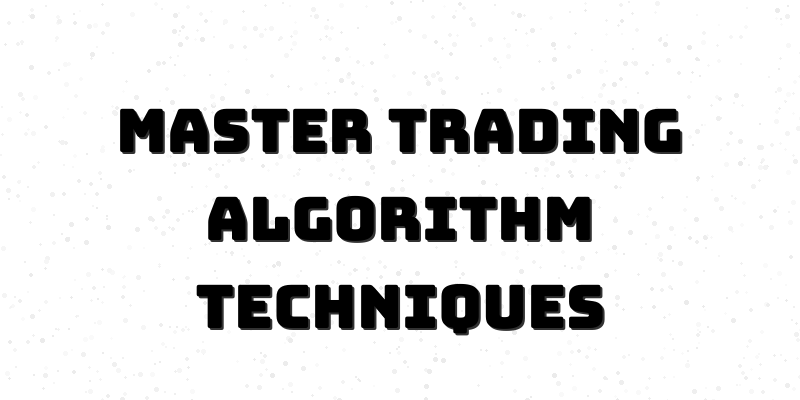Unlocking the Secrets of Algorithmic Trading: A Journey into Advanced Trading Strategies
In today's fast-paced financial markets, algorithmic trading has emerged as a game-changer for traders looking to elevate their strategies. This blog post aims to unravel the world of algorithmic trading, exploring its core components, benefits, and how traders can leverage this powerful tool to enhance their trading outcomes. Join us on this insightful journey into the mechanics of algorithmic trading, ensuring you are well-equipped to navigate the complexities of the market with precision and agility.
Understanding Algorithmic Trading
Algorithmic trading refers to the use of computerized algorithms to execute trades based on predefined criteria. This innovative approach transcends traditional manual trading, allowing investors to capitalize on market opportunities with precision.
In essence, an algorithm analyzes an extensive amount of market data, leveraging technical analysis indicators and historical performance metrics to make informed trading decisions. From simple strategies employing moving averages to complex methods utilizing machine learning, algorithmic trading encompasses various techniques designed to optimize trading efficacy.
The Importance of Technical Analysis in Algorithmic Trading
Technical analysis serves as the foundation of algorithmic trading. By interpreting historical price data and market trends, technical analysis enables traders to make predictions about future price movements.
Key indicators employed in technical analysis include moving averages, relative strength index (RSI), and Bollinger Bands. Understanding these indicators is crucial for developing an efficient trading algorithm that can adapt to market changes and respond accordingly. Algorithm developers must continuously refine their strategies by backtesting their algorithms against historical data to validate their effectiveness.
Risk Management: Protecting Your Trading Capital
Effective risk management is paramount in algorithmic trading. Developing a comprehensive risk management strategy allows traders to protect their capital from unforeseen market fluctuations.
Common risk management techniques include setting stop-loss orders, diversifying the portfolio, and adjusting position sizes according to market volatility. Algorithmic traders can automate these risk management measures, allowing their systems to respond quickly to adverse market conditions, which is essential for preserving long-term trading success.
The Psychological Aspects of Trading Algorithms
Trading psychology plays a critical role in trading success, often influencing decisions to enter or exit positions. One of the advantages of algorithmic trading is that it mitigates human emotions, allowing traders to rely on data-driven decisions.
However, understanding the psychological aspects of trading remains essential. Traders must be prepared for periods of drawdown or unexpected losses, recognizing that no algorithm can guarantee success. Sound emotional resilience is necessary to remain committed to one's trading plan, especially when faced with human factors.
Backtesting: The Crucible of Algorithmic Validation
Backtesting is an essential step in the algorithm development process. By simulating the algorithm's performance using historical market data, traders can evaluate its effectiveness and make necessary adjustments before deploying it in live markets.
Investors can utilize specialized backtesting software that helps analyze trading performance across various market conditions. This validation process not only boosts a trader's confidence in their algorithm but also enhances the likelihood of long-term success.
Practical Steps to Get Started with Algorithmic Trading
Beginners should start by familiarizing themselves with trading platforms that support algorithmic trading. This often includes coding platforms or specialized algorithmic trading software that offers user-friendly interfaces for strategy development.
Additionally, engaging with the trading community through forums and online courses can provide insights and resources that facilitate the learning process. Understanding programming languages such as Python or R can also be beneficial, as they are commonly used in developing trading algorithms.






